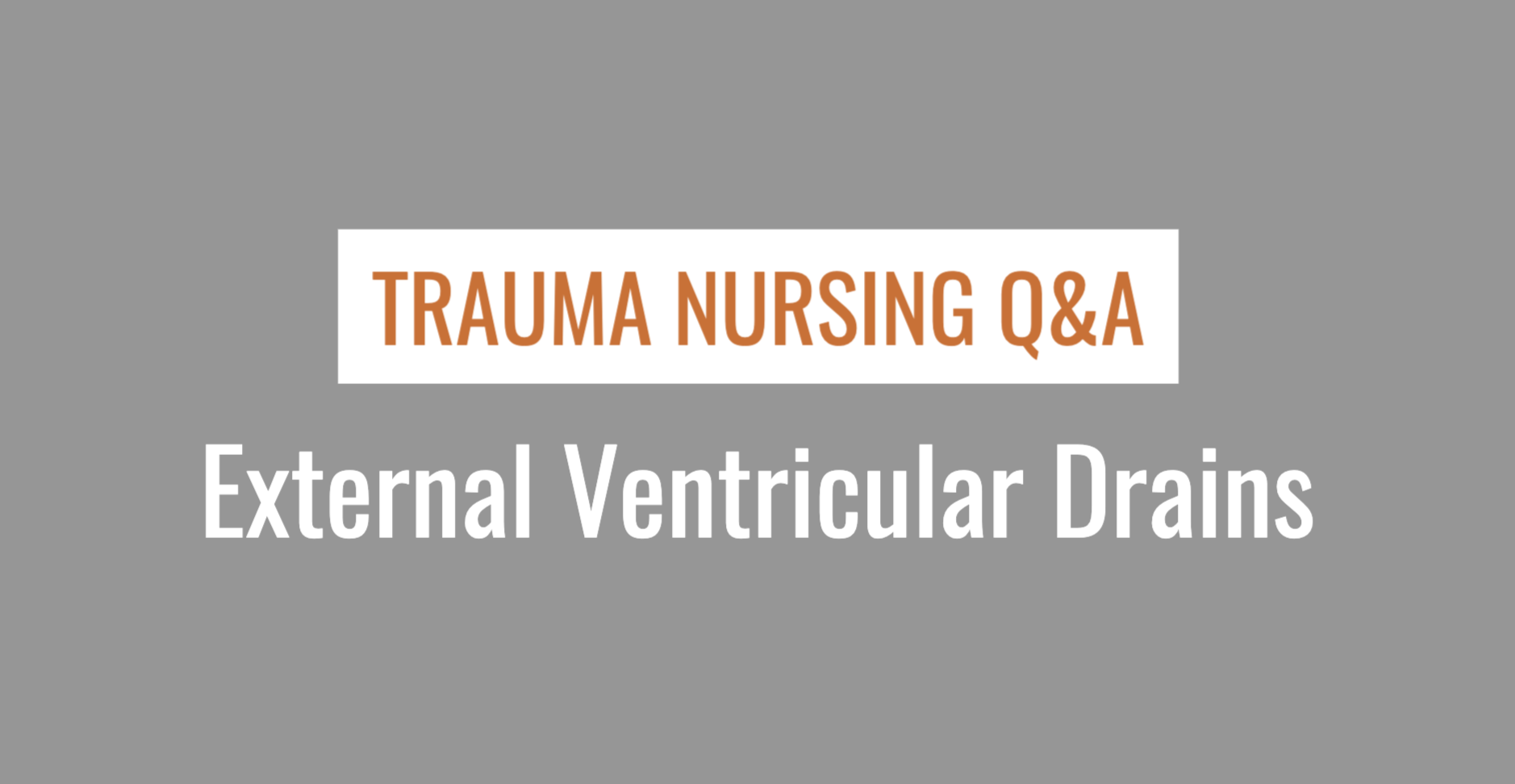The placement of an external ventricular drain (EVD) in the emergency department is a low-frequency, high acuity procedure. Trauma nurses should understand the indications for this intervention, be aware of potential complications and know how to care for patients who have received an EVD.
Q. What are the indications for placement of an EVD?
Head injury may result in subarachnoid, intraventricular or intraparenchymal (inside the brain itself) hemorrhage. These bleeds can prevent cerebrospinal fluid (CSF) from draining normally, leading to increased intracranial pressure (ICP). This will decrease the patient’s cerebral perfusion pressure, leading to ischemia and death of brain tissue.
Some early signs of increased ICP include headache, nausea, vomiting, amnesia, behavior changes, impaired judgment, restlessness and drowsiness.
An EVD allows CSF to drain, ideally maintaining normal ICP. EVDs placed outside of the OR are often placed due to the patient’s rapid neurological deterioration. Due to this rapid deterioration and need for an unclouded neurological assessment, EVDs are often placed with no sedation and little to no anxiolytics.
Q. What are the potential complications of an EVD?
Infection. As with all procedures performed outside an OR, EVD placement comes with increased risk of infection. To mitigate this risk, the neurosurgeon will use an antimicrobial-impregnated catheter as the drain and may also order a single round of antibiotics immediately before or after placement.
Hemorrhage. The neurosurgeon will place the EVD based on anatomical landmarks, so it may take some time for the neurosurgeon to find the ventricle. This can carry a risk of hemorrhage. Hemorrhage may occur if the neurosurgeon inadvertently hits an artery or vein, in which case the patient will likely be taken immediately to the OR.
Secondary brain injury. Over-drainage of CSF can lead to the brain crushing itself beneath its own weight. Under-drainage will allow the increased ICP to continue, thus decreasing the cerebral perfusion pressure, leading to ischemia and brain tissue death.
Q. What orders should be placed with an EVD?
Level of drain. The drain level is essentially the pressure setting for the ventricle. When the pressure within the ventricle increases above the level of the drain, CSF will drain from the ventricle into the EVD. A setting that is too high may cause under-drainage of CSF, while one that is too low will cause over-drainage. This setting may be changed at the direction of the neurosurgeon if the desired amount of CSF is not draining.
Drainage amount limits. Minimum and maximum drainage amount limits should be ordered by the neurosurgeon. The goal is to prevent both under-drainage and over-drainage of CSF that could lead to secondary brain injury and herniation. Drainage amount limits are often set as mL per hour. The amount of drainage should be assessed hourly. It is also recommended that the CSF in the collection chamber be emptied into the drainage bag at each hour (so long as the drainage is normal and unchanged in color and clarity). This will facilitate the next hour’s assessment of the drainage amount.

Frequency of neurological checks. The patient with an EVD in place needs to be closely monitored for further deterioration or improvement of symptoms. Neurological checks will likely be a minimum of every 2 hours, but the neurosurgeon may order more frequent checks based on the acuity of the patient. Changes may be subtle, so it is important for the emergency nurse to pay close attention to even minute changes in activity level or restlessness as well as alertness.
Q. How often should the EVD be re-leveled?
The EVD should be leveled to the tragus, and it must be re-leveled every time the patient moves. This is where family education is key. Instruct the family not to touch the drain since it has been set at a specific level prescribed by the neurosurgeon. If the patient begins to move, have family members use the call bell to notify the emergency nurse that the drain needs to be re-leveled.
Learn more about head trauma

This article is based on Brains, Drains and Head Trauma, an interactive online course from the Board of Certification for Emergency Nursing (BCEN®). Developed by trauma nursing experts, this CE-eligible course provides an overview of brain anatomy and physiology, explains key concepts in head trauma, and outlines evidence-based care for head trauma patients. To access Brains, Drains and Head Trauma and other courses for trauma nurses, visit BCEN Learn.


